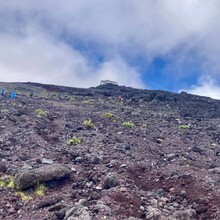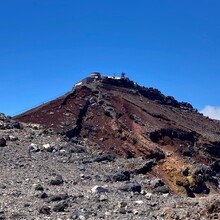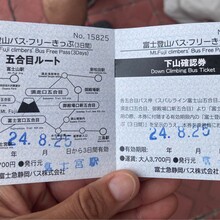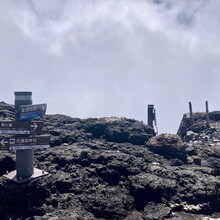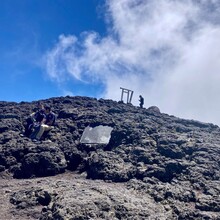Reflecting on a week exploring all 4 Mt Fuji trails - they certainly have their own personalities.
Mt Fuji ascent #2 - Fujinomiya trail
pre-existing FKT Strava segment - https://www.strava.com/segments/4571987
Profile/terrain:
Fujinomiya trail ascent has a consistently steep gradient across rock-covered dirt terrain, and is at times quite awkward and narrow. Fortunately, at less than 3mi/5km long, it's by far the shortest of the 4 Fuji trails :)
Unlike the other trails, this one does not separate any portions for those ascending versus descending, which can create tight pass-bys with other trail users. This trail is the 2nd-busiest of the 4 as is, so avoid weekends if you're trying to move up/down quickly.
Your FKT finish line is a large Torii (gate). If you turn left after reaching the top, you will quickly make your way to the "true" high point of Mt Fuji, called Kengamine.
For those not acclimated to altitude, please note you are starting at ~2400m and finishing at ~3700m, which will hamper breathing/performance.
Planning/provisions:
You now need to make a reservation to ascend any of the 4 trails, for safety tracking and capacity reasons. In Fujinomiya's case, that reservation is free, and you can do it on the spot when you arrive at the 5th Station to climb. If you begin your climb after 4pm, you must also have made an overnight mountain hut reservation. You can catch the shuttle bus to the trailhead from Shin-Fuji or Fujinomiya Stations, or via Mizugatsuka Park from Gotemba Station (in all cases, tickets available at station and on bus). It's the longest shuttle ride to the mountain of all the trails, as you are starting at the highest elevation.
This trailhead is the least modern of the 4 Fuji trails, with no shelter/buildings to rest under should the weather turn. The necessities are there, though, with a few porta-toilet stalls, vending machines, and tiny snack/noodle shop.
Mt. Fuji has no running water. This includes all mountain huts! You can restock your supplies by purchasing drinks/noodles/curry from mountain huts, or from the plentiful vending machines found at the start, the peak, and most huts. There are also paid toilets along the way. Bring Y100 coins with you for toilets/machines.
Please note also that if you aren't climbing "in season" (early July to early September), most facilities incl. vending machines will not be available.
My experience on the day:
Weather was humid and hot - typical of Japanese summers. It was quite windy, which helped manage the sweating! Incredibly, it didn't start raining until the moment i had descended and was back in the trailhead parking lot (though naturally it came down in buckets and drenched everyone).
Post-FKT, i descended via the same trail to save the legs (versus the longer/faster other trails), which was a really nice experience. On the ascent, i'd tried to go around other trail users when passing, which slowed me down a bit and used quite a bit of extra energy. On the way down, many of them recognized me and gave me a big cheer, and sometimes even moved to the side so i could descend faster.
This ascent was the slowest of all 4 trails, owing to the consistent steep gradient and many rocks/awkward steps along the way. Additionally, i didn't have many extra days to play with, so this climb was on a Sunday, generally a busy day on the trails.
I made the climb Unsupported, with 1.5L of liquids and 2 gels. Quite a bit of this was saved for the long trip back on the shuttle and to the other town i was staying in.


